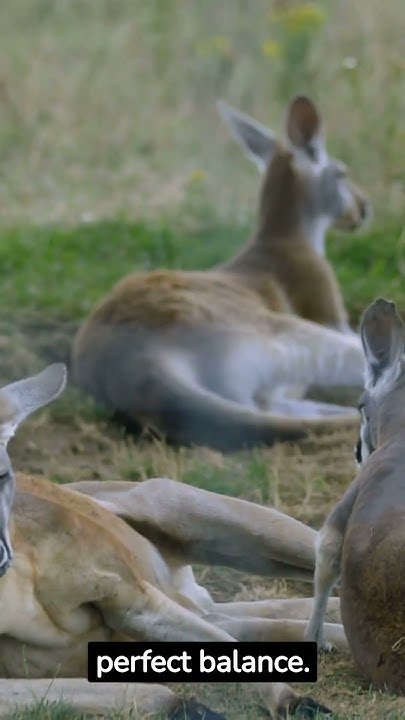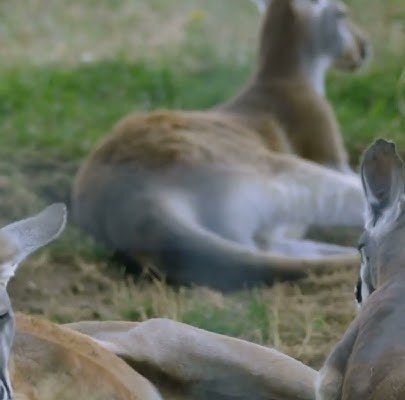
Kangaroos are fascinating creatures with a lot of unique characteristics. Understanding the truth about these incredible animals can help us appreciate them even more. Throughout this article, we’ll uncover some common myths about kangaroos, exploring their habits, behaviors, and even their role in the ecosystem. You might find yourself rethinking what you know about these iconic animals!
Kangaroos Can’t Walk Backwards
You might have heard that kangaroos can’t walk backwards, and while it sounds intriguing, that’s not entirely accurate. Here’s the thing: kangaroos are indeed built for forward movement. Their powerful hind legs and large tail provide balance and propulsion when hopping, making them incredibly efficient at moving forward. However, they can pivot and move in tight spaces, which means they can technically step back if absolutely needed.
Imagine trying to squeeze through a crowded space. You might not be able to walk backward gracefully, but you could still maneuver around obstacles if needed. Similarly, a kangaroo can navigate its environment by shifting its body without needing to hop backwards. So, while it may not be their cardio of choice, they can manage small backward movements!
Kangaroo Pouches Are Just for Carrying Babies
Many people believe that kangaroo pouches are solely for carrying their young, but there’s a bit more to it. Sure, baby kangaroos—known as joeys—spend the first months of their lives comfortably nestled in their mom’s pouch. But the pouch serves several vital functions beyond that.
First, it’s a safe haven. Inside the pouch, the joey is protected from predators and harsh weather conditions. Second, a mother kangaroo can nurse her joey with ease, so it gets the nutrients it needs while staying close to her warmth. Interestingly, kangaroo pouches even have built-in muscle control that can help keep the joey snug and secure as the mother moves around. It’s not just a carry-all; it’s a nurturing environment that supports the joey’s growth and safety.
Kangaroos Are Aggressive and Dangerous
When people discuss kangaroos being aggressive, it’s often exaggerated. Honestly, kangaroos are generally shy and prefer to avoid confrontation. Most encounters with humans are harmless, as these animals would rather hop away than engage. Think about it: how often do you want to be around someone who’s yelling or acting aggressively? It’s the same for kangaroos.
That said, like any wild animal, they can be defensive if they feel threatened—especially mothers with joeys. In rare cases, an upset kangaroo might stand its ground or even rear up to show its strength. But most of the time, they’re just looking for some grass to munch on. So, if you spot one, just keep your distance and let it carry on with its day!
Kangaroos Are Just Big Wallabies
Another common misconception is that kangaroos are just larger versions of wallabies. While they share some similarities—like their long tails and strong hind legs—they are distinct species. Picture a kangaroo as the heavyweight champ in the marsupial world, while wallabies are the fun-sized versions.
Kangaroos belong to the Macropodidae family, which means “big foot.” This family includes various species, such as the eastern grey kangaroo and the red kangaroo. Wallabies, on the other hand, are smaller and have different habitat preferences. They tend to live in areas that are denser and more forested compared to the open lands that kangaroos prefer. So, while they may look alike at first glance, they’re more like cousins than simply scaled-up versions of one another.
Kangaroos Can Jump Higher Than You Think
You might think that kangaroos can only bounce around a little, but they’re surprisingly powerful jumpers. In fact, a kangaroo can leap up to 10 feet high in a single bound! That’s like jumping over a basketball hoop! Their strong hind legs are the perfect design for making such impressive jumps.
What’s even cooler is that their hopping is energy-efficient. They have a unique way of moving that allows them to travel long distances without exhausting themselves. Instead of constantly using muscle power for every hop, they use their tendons to store energy, kind of like how a pogo stick functions. This means they can cover vast stretches of land in search of food and mates without wearing themselves out—talk about smart evolution!
Kangaroos Are the Only Marsupials
You might assume kangaroos hold the title of being the only marsupials out there, but that’s far from true. Marsupials are a fascinating group that includes more than just kangaroos. In fact, there are about 330 species of marsupials around the world!
Along with kangaroos, you have wallabies, koalas, and even opossums in the mix. Each of these species has its own unique characteristics and habitats. So, while kangaroos are iconic and captivating, they’re just part of a much larger family of remarkable creatures. It’s like having a favorite band—there’s a whole range of different artists who contribute to the music scene!
Kangaroos Are Only Found in Australia
While kangaroos are undoubtedly a symbol of Australia, many people think they’re exclusive to that continent. In reality, kangaroos do roam in a few other areas, most notably in nearby islands like Tasmania. However, Australia remains their primary home and the heart of their ecosystem.
Kangaroos play a vital role in shaping the Australian landscape. They help maintain the balance of their environment by grazing on grasses and dispersing seeds through their droppings. This means that their presence is crucial for the health of their habitats. So, while they might be synonymous with Australia, their influence and importance stretch beyond just “being found” there.
In conclusion, kangaroos are more than just cute, hopping animals. By debunking these common myths, we can appreciate their true nature and understand how they fit into the environment. Next time you think of a kangaroo, you’ll know that they’re complex, fascinating creatures deserving of our admiration. So, let’s continue celebrating these unique animals while also debunking myths that can cloud our understanding. After all, there’s always more to learn about our furry friends!

